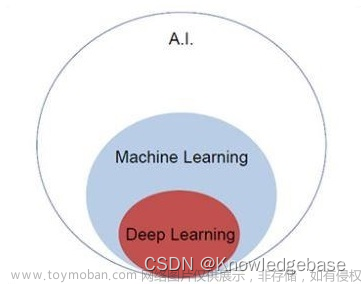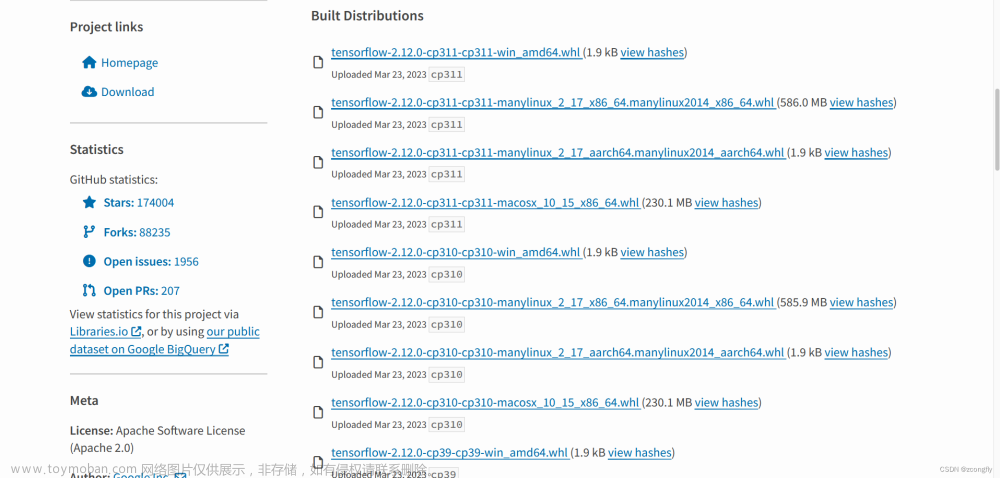Word embedding是从离散对象(如单词)映射到向量和实数的概念,可将离散的输入对象有效地转换为有用的向量。
Word embedding的输入如下所示:
blue: (0.01359, 0.00075997, 0.24608, ..., -0.2524, 1.0048, 0.06259) blues: (0.01396, 0.11887, -0.48963, ..., 0.033483, -0.10007, 0.1158) orange: (-0.24776, -0.12359, 0.20986, ..., 0.079717, 0.23865, -0.014213) oranges: (-0.35609, 0.21854, 0.080944, ..., -0.35413, 0.38511, -0.070976)
Word2vec
Word2vec是用于无监督最常见方法,它以一种方式训练模型,即给定的输入单词通过使用跳跃语法来预测单词的上下文。
TensorFlow提供了多种方法来实现这种模型,从而提高了复杂性和优化级别,并使用了多线程概念和更高级别的抽象。
import os import math import numpy as np import tensorflow as tf from tensorflow.contrib.tensorboard.plugins import projector batch_size = 64 embedding_dimension = 5 negative_samples = 8 LOG_DIR = "logs/word2vec_intro" digit_to_word_map = { 1: "One", 2: "Two", 3: "Three", 4: "Four", 5: "Five", 6: "Six", 7: "Seven", 8: "Eight", 9: "Nine"} sentences = [] # 创建两种句子 - 奇数和偶数序列。 for i in range(10000): rand_odd_ints = np.random.choice(range(1, 10, 2), 3) sentences.append(" ".join([digit_to_word_map[r] for r in rand_odd_ints])) rand_even_ints = np.random.choice(range(2, 10, 2), 3) sentences.append(" ".join([digit_to_word_map[r] for r in rand_even_ints])) # 将单词映射到索引 word2index_map = {} index = 0 for sent in sentences: for word in sent.lower().split(): if word not in word2index_map: word2index_map[word] = index index += 1 index2word_map = {index: word for word, index in word2index_map.items()} vocabulary_size = len(index2word_map) # 生成skip-gram对 skip_gram_pairs = [] for sent in sentences: tokenized_sent = sent.lower().split() for i in range(1, len(tokenized_sent)-1): word_context_pair = [[word2index_map[tokenized_sent[i-1]], word2index_map[tokenized_sent[i+1]]], word2index_map[tokenized_sent[i]]] skip_gram_pairs.append([word_context_pair[1], word_context_pair[0][0]]) skip_gram_pairs.append([word_context_pair[1], word_context_pair[0][1]]) def get_skipgram_batch(batch_size): instance_indices = list(range(len(skip_gram_pairs))) np.random.shuffle(instance_indices) batch = instance_indices[:batch_size] x = [skip_gram_pairs[i][0] for i in batch] y = [[skip_gram_pairs[i][1]] for i in batch] return x, y #批处理示例 x_batch, y_batch = get_skipgram_batch(8) x_batch y_batch [index2word_map[word] for word in x_batch] [index2word_map[word[0]] for word in y_batch] #输入数据,标签 train_inputs=tf.placeholder(tf.int32, shape=[batch_size]) train_labels = tf.placeholder(tf.int32, shape = [batch_size, 1]) # 嵌入查找表目前仅在 CPU 中实现 tf.name_scope("embeddings"): embeddings = tf.Variable( tf.random_uniform([vocabulary_size, embedding_dimension], -1.0, 1.0), name = embedding) # 这本质上是一个查找表 embed = tf.nn.embedding_lookup(embeddings, train_inputs) # 为 NCE 损失创建变量 nce_weights = tf.Variable( tf.truncated_normal([vocabulary_size, embedding_dimension], stddev = 1.0/ math.sqrt(embedding_dimension))) nce_biases = tf.Variable(tf.zeros([vocabulary_size])) loss = tf.reduce_mean( tf.nn.nce_loss(weights = nce_weights, biases = nce_biases, inputs = embed, labels = train_labels,num_sampled = negative_samples, num_classes = vocabulary_size)) tf.summary.scalar("NCE_loss", loss) # 学习率衰减 global_step = tf.Variable(0, trainable = False) learningRate = tf.train.exponential_decay(learning_rate = 0.1, global_step = global_step, decay_steps = 1000, decay_rate = 0.95, staircase = True) train_step = tf.train.GradientDescentOptimizer(learningRate).minimize(loss) merged = tf.summary.merge_all() with tf.Session() as sess: train_writer = tf.summary.FileWriter(LOG_DIR, graph = tf.get_default_graph()) saver = tf.train.Saver() with open(os.path.join(LOG_DIR, metadata.tsv), "w") as metadata: metadata.write(Name Class ) for k, v in index2word_map.items(): metadata.write(%s %d % (v, k)) config = projector.ProjectorConfig() embedding = config.embeddings.add() embedding.tensor_name = embeddings.name # 将此张量链接到其元数据文件(例如标签)。 embedding.metadata_path = os.path.join(LOG_DIR, metadata.tsv) projector.visualize_embeddings(train_writer, config) tf.global_variables_initializer().run() for step in range(1000): x_batch, y_batch = get_skipgram_batch(batch_size) summary, _ = sess.run( [merged, train_step], feed_dict = {train_inputs: x_batch, train_labels: y_batch}) train_writer.add_summary(summary, step) if step % 100 == 0: saver.save(sess, os.path.join(LOG_DIR, "w2v_model.ckpt"), step) loss_value = sess.run(loss, feed_dict = { train_inputs: x_batch, train_labels: y_batch}) print("Loss at %d: %.5f" % (step, loss_value)) # 在使用之前规范化嵌入 norm = tf.sqrt(tf.reduce_sum(tf.square(embeddings), 1, keep_dims = True)) normalized_embeddings = embeddings / norm normalized_embeddings_matrix = sess.run(normalized_embeddings) ref_word = normalized_embeddings_matrix[word2index_map["one"]] cosine_dists = np.dot(normalized_embeddings_matrix, ref_word) ff = np.argsort(cosine_dists)[::-1][1:10] for f in ff: print(index2word_map[f]) print(cosine_dists[f])
上面的代码生成以下输出-文章来源:https://www.toymoban.com/news/detail-660026.html
TensorFlow - 单词嵌入 - 无涯教程网无涯教程网提供Word embedding是从离散对象(如单词)映射到向量和实数的概念,可将离散的输入对象有效...https://www.learnfk.com/tensorflow/tensorflow-word-embedding.html文章来源地址https://www.toymoban.com/news/detail-660026.html
到了这里,关于无涯教程-TensorFlow - 单词嵌入的文章就介绍完了。如果您还想了解更多内容,请在右上角搜索TOY模板网以前的文章或继续浏览下面的相关文章,希望大家以后多多支持TOY模板网!











